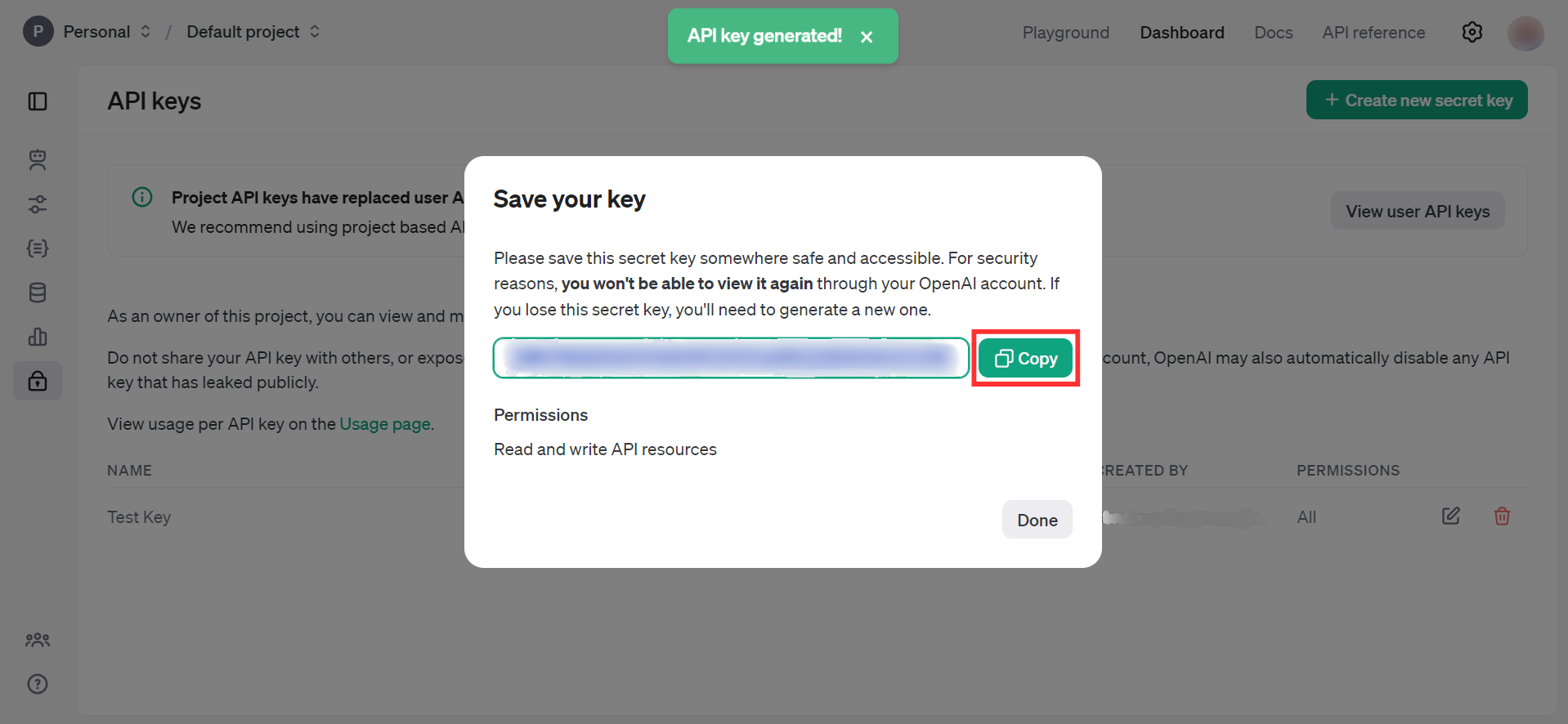OpenAI, a leading AI research organization focused on creating friendly AI for humanity, provides the OpenAI API to access its powerful AI models for tasks like natural language processing and image generation.
The ballarinax/openai.audio package offers APIs to connect and interact with audio related endpoints of OpenAI REST API v1 providing access to various models developed by OpenAI for audio-related tasks.
To use the OpenAI Connector, you must have access to the OpenAI API through a OpenAI Platform account and a project under it. If you do not have a OpenAI Platform account, you can sign up for one here.
-
Open the OpenAI Platform Dashboard.
-
Navigate to Dashboard -> API keys
- Click on the "Create new secret key" button
- Fill the details and click on Create secret key
- Store the API key securely to use in your application
To use the OpenAI Audio connector in your Ballerina application, update the .bal file as follows:
Import the openai.audio module.
import ballerinax/openai.audio;Create a audio:ConnectionConfig with the obtained API Key and initialize the connector.
configurable string token = ?;
final images:Client openAIAudio = check new ({
auth: {
token
}
});Now, utilize the available connector operations.
public function main(string fileName) returns error? {
byte[] fileContent = check io:fileReadBytes(fileName);
audio:CreateTranscriptionRequest request = {
model: "whisper-1",
file: {fileContent, fileName}
};
audio:CreateTranscriptionResponse response =
check OpenAIAudio->/audio/transcriptions.post(request);
}bal runThe OpenAI Audio connector provides practical examples illustrating usage in various scenarios. Explore these examples, covering the following use cases:
- International news translator - Converts a text news given in any language to english
- Meeting transcriber and translator - Converts an audio given in a different language into text in input language and english
-
Download and install Java SE Development Kit (JDK) version 17. You can download it from either of the following sources:
Note: After installation, remember to set the
JAVA_HOMEenvironment variable to the directory where JDK was installed. -
Download and install Ballerina Swan Lake.
-
Download and install Docker.
Note: Ensure that the Docker daemon is running before executing any tests.
-
Export Github Personal access token with read package permissions as follows,
export packageUser=<Username> export packagePAT=<Personal access token>
Execute the commands below to build from the source.
-
To build the package:
./gradlew clean build
-
To run the tests:
./gradlew clean test -
To build the without the tests:
./gradlew clean build -x test -
To run tests against different environments:
./gradlew clean test -Pgroups=<Comma separated groups/test cases>
-
To debug the package with a remote debugger:
./gradlew clean build -Pdebug=<port>
-
To debug with the Ballerina language:
./gradlew clean build -PbalJavaDebug=<port>
-
Publish the generated artifacts to the local Ballerina Central repository:
./gradlew clean build -PpublishToLocalCentral=true
-
Publish the generated artifacts to the Ballerina Central repository:
./gradlew clean build -PpublishToCentral=true
As an open-source project, Ballerina welcomes contributions from the community.
For more information, go to the contribution guidelines.
All the contributors are encouraged to read the Ballerina Code of Conduct.
- For more information go to the
openai.audiopackage. - For example demonstrations of the usage, go to Ballerina By Examples.
- Chat live with us via our Discord server.
- Post all technical questions on Stack Overflow with the #ballerina tag.





